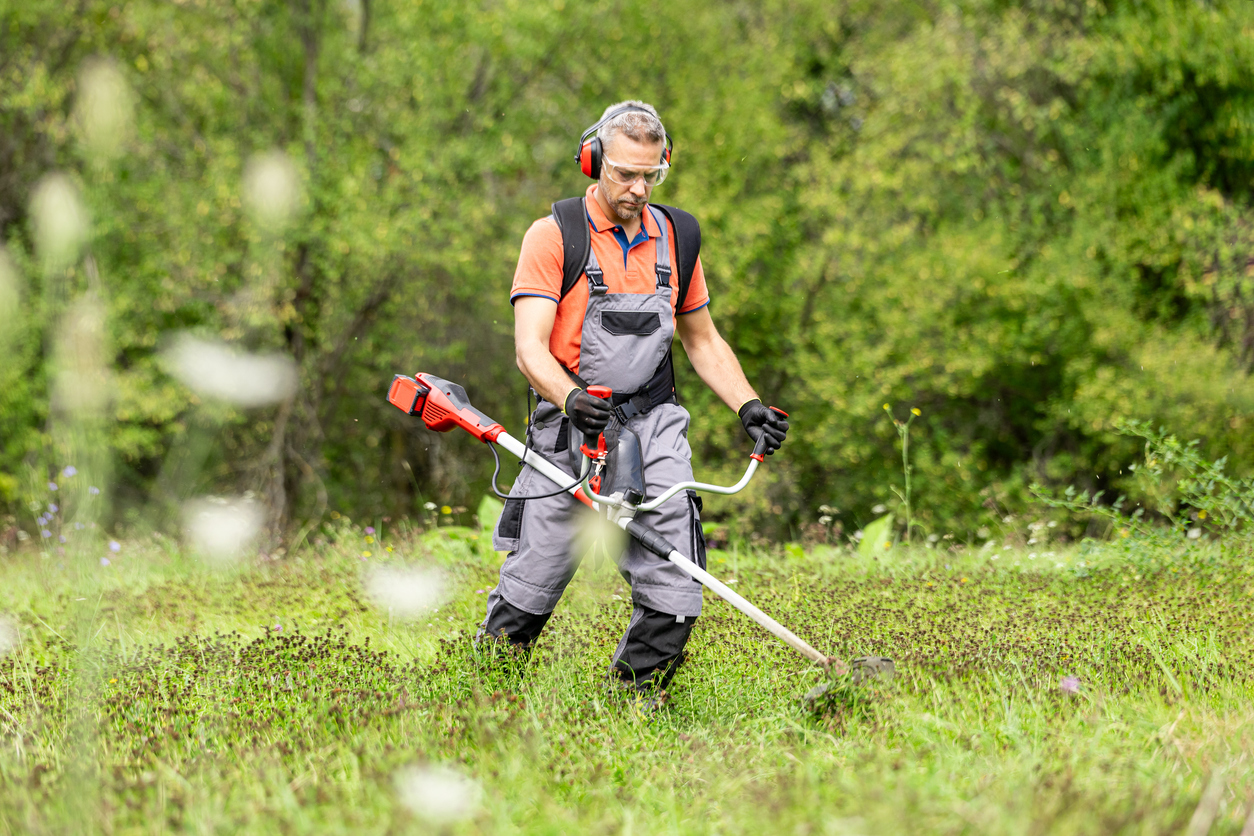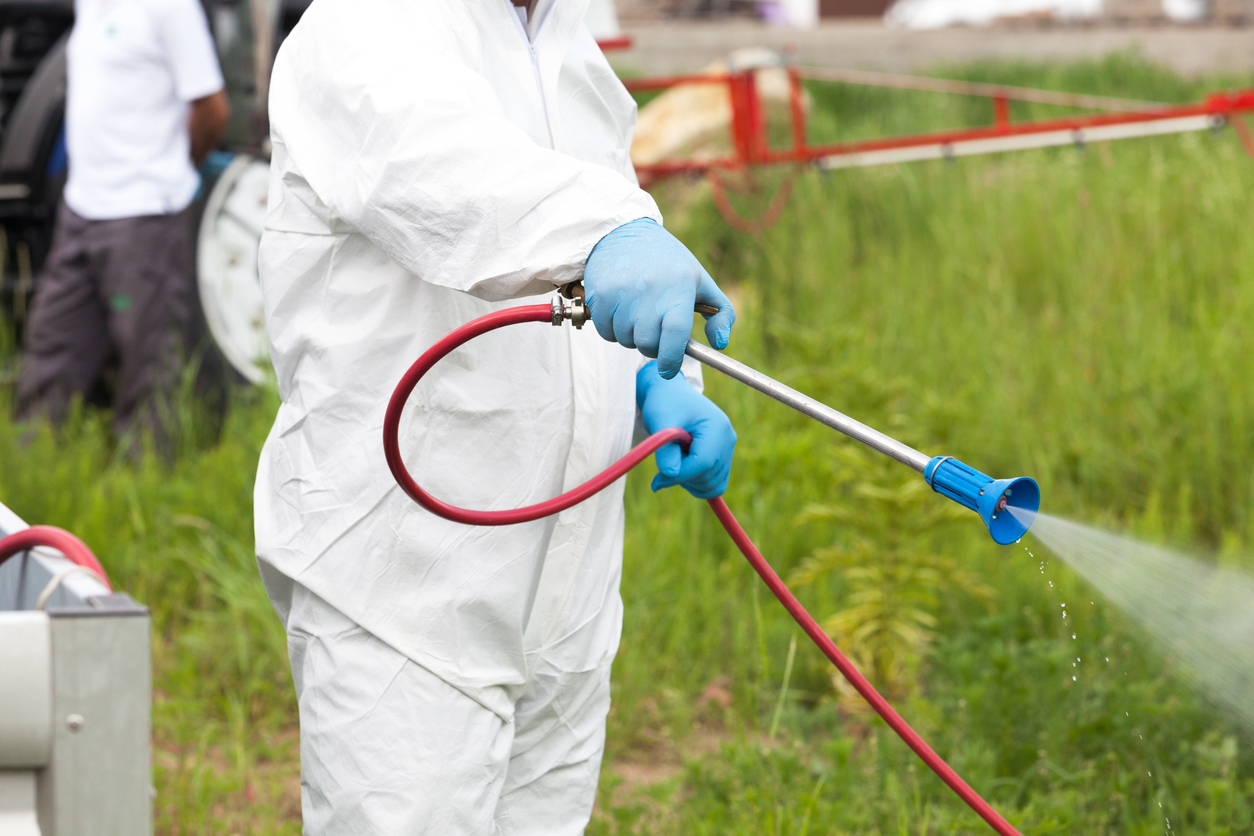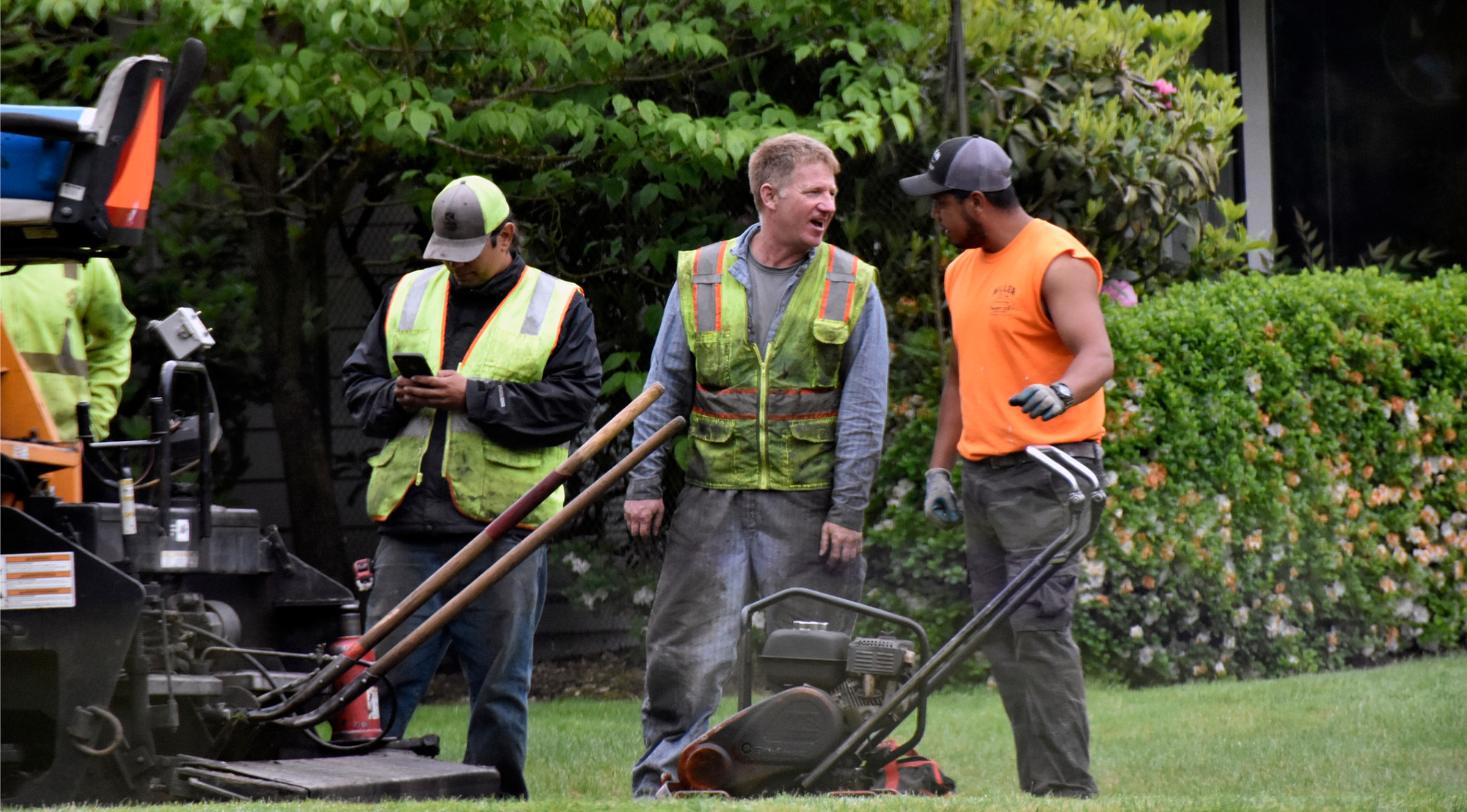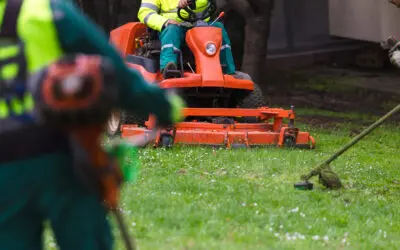Lawn Equipment Maintenance: A Guide for Landscaping Businesses
KEY TAKEAWAYS
-
Preventative maintenance reduces costly breakdowns, improves efficiency, and protects your business reputation.
-
Establishing a maintenance routine—with schedules, SOPs, and task assignments—is critical to keeping equipment in top condition.
-
Daily, weekly, and seasonal checklists help ensure consistent upkeep, while training staff ensures everyone follows procedures.
-
Tracking costs and planning replacements helps manage budgets and ensures timely upgrades to improve performance and sustainability.

As a landscaping business owner, you know that your livelihood depends on the reliability and performance of your lawn equipment. From mowers and chainsaws to leaf blowers and hedge trimmers, these machines are the lifeblood of your operation.
But without proper maintenance, even the best equipment can quickly fall into disrepair, leading to costly downtime, dissatisfied clients, and a damaged reputation.
By proactively servicing your machines, you can extend their lifespan, minimize breakdowns, and keep your business running smoothly. In this guide, we’ll dive deep into the world of lawn equipment maintenance, exploring best practices, common issues, and strategies for keeping your gear in top shape.
Why lawn equipment maintenance is essential for landscaping businesses
Preventative maintenance (PM) keeps your business moving forward, and unplanned downtime causes tangible damage to your organization. It doesn’t help that many companies operate using a run-to-fail mindset, where maintenance and repairs only happen when something breaks.
This mindset leads to several problems, such as:
- Decreased operational efficiency
- Increased repair and replacement costs
- Bloated overtime or outsourced subcontractor rates
- Lost clients due to delays and poor results
- Damage to reputation
The workable life expectancy of much of your equipment is longer than you would expect. But that life expectancy is only possible when you stick to a regular preventative maintenance schedule, especially for big-ticket items. In the long run, you can save hundreds or even thousands by maintaining your gear properly.

Building an equipment maintenance routine
While it’s possible to create an equipment maintenance routine from scratch, many solutions now offer digital tools that take out the guesswork. These tools automatically categorize your equipment, generate schedules, offer prioritization tips, and share plans with responsible parties.
However, a ground-up approach offers a greater level of control over everything from priority to how often PM is on the schedule. Here’s how you can create a maintenance routine from scratch:
- Take inventory of your equipment: You can’t maintain what you don’t know you have. List out all equipment, focusing on big-ticket items and those with vulnerable parts or frequent use.
- Create equipment categories: Some tools naturally need more care than others. Create categories for your equipment based on maintainability, time requirements, or cost.
- Set your priorities: Run a risk analysis on your equipment and prioritize gear that poses the largest potential for negative impacts. Also, consider the frequency of use of your equipment to generate priority lists.
- Establish a maintenance schedule: Next, it’s time to create your schedule, breaking it down by daily, weekly, monthly, and seasonal tasks (tips on this up next).
- Create maintenance SOPs: Write or source checklists and workflows for maintaining all equipment to ensure proper maintenance.
- Assign maintenance tasks: With an equipment list, schedule, and SOP in hand, you can assign team members to tackle maintenance tasks.
- Keep good records: Create a centralized space (digital or physical) to store and manage maintenance records, and stress the importance of regularly updating those records when maintenance is performed.
Your maintenance schedules, SOPs, and priorities will likely change over time as you work out all the kinks, so make sure you revisit and update them regularly.
Daily, weekly, and seasonal tasks
Some of your lawn equipment may need daily servicing, while other tools might only need maintenance once or twice a year. Separating these tasks helps balance the workload and ensures everything receives proper maintenance.
Examples of daily tasks
- Cleaning grass clippings, dirt, and debris from mowers and other equipment
- Checking engine oil and fuel tank levels before each use
- Inspecting for any visible damage or loose parts
- Lubricating moving parts as needed
Examples of weekly tasks
- Sharpening dull blades
- Cleaning or replacing air filters
- Thoroughly cleaning the underside of mower decks
- Inspecting belts, tires, and cables for wear
- Checking tire pressure
Examples of seasonal maintenance
- Changing oil and oil filters
- Replacing spark plugs and fuel filters
- Cleaning fuel systems and checking fuel lines
- Lubricating all moving parts
- Inspecting and replacing any worn belts or hoses
- Sharpening or replacing mower blades
- Cleaning and prepping equipment for off-season storage
Consistency is key — skipping maintenance to save a little time in the short term will cost you a lot more time and money in the long run when an under-maintained machine breaks down. It all comes down to planning ahead and allocating adequate time in the schedule for these vital maintenance tasks.

Essential maintenance tips for common lawn equipment
Every lawn care company has a unique inventory of equipment, each with its own maintenance needs. So while we can’t cover every piece of equipment you have on hand, we can look at the standard maintenance tasks for common tools that every lawn care and landscaping company uses.
Lawn mowers
- Replace the oil and change the oil filter regularly
- Replace or clean the air filter
- Sharpen dull mower blades and balance the mower deck
- Lubricate joints and pivot points
- Clean the underside of the deck to prevent grass buildup
String trimmers
- Replace the trimmer line as needed
- Check and replace spark plugs
- Clean air filter
- Lubricate the gearbox (if applicable)
Leaf blowers
- Inspect and replace the spark plugs
- Clean or replace the air filter
- Check and clean the fuel system
- Tighten any loose bolts
Other equipment
For other lawn care equipment, such as chainsaws, hedge trimmers, or snow blowers:
- Follow manufacturer recommendations in the owner’s manual
- Perform regular inspections, cleaning, and lubrication
- Address any damage or wear promptly
Attention to detail when you perform routine maintenance makes a huge difference in performance and longevity. Make it a habit, and you’ll notice the difference. And when in doubt, reference the user manual or contact the manufacturer for brand-specific information and maintenance guidelines.
Preventing common equipment issues
Just like preventing common issues with your car or truck, you can take some extra steps to avoid issues with your landscape equipment. Here are some common problems you may encounter and how to address them:
Fuel system problems
- Use ethanol-free gasoline if possible
- Add a fuel stabilizer that will sit for over 30 days
- Regularly inspect fuel lines and carburetor
Overheating
- Clean dirt/debris from engine cooling fins
- Ensure the oil is at the proper levels
- Clear any airflow obstructions
Corrosion and rust
- Thoroughly clean equipment before storage
- Use fogging oil in engine cylinders
- Store in a dry location
- Use additives and polishes for metallic parts
Early detection is also essential to uncover potential issues before they turn into big, expensive problems. So train your team to carefully inspect equipment during maintenance and encourage prompt reporting of any irregularities. When a team member flags a tool for suspected issues, pull it out of use and act quickly to make repairs before problems worsen.
Partnering with professionals for advanced repairs and maintenance
Much of your routine PM is an in-house responsibility, but some repairs are safer, cheaper, or better when a professional does them. Some of those repairs include major overhauls or rebuilds, complex troubleshooting, and repairs requiring specialty tools or knowledge.
Having a positive working relationship with a trustworthy local repair shop makes maintenance and upkeep much easier. Budget for professional servicing, and don’t hesitate to bring in the experts for anything beyond your team’s skill level. It’ll save you money, time, and headaches.
Training your team in lawn equipment maintenance
A crucial part of preventative maintenance is training your team on the proper procedures and frequency. There are plenty of free resources on YouTube, manufacturer websites, and third-party providers to ensure that every team member knows what they’re doing.
The best time to provide these training courses is during the hiring and onboarding process, with refreshers once a year to ensure consistency across your team. There are even tools online to help you create guides, videos, or training courses specific to your lawn care operations.
Upgrading and replacing lawn equipment
Every piece of equipment will eventually bite the dust, and it’s important to be able to recognize when it’s time for an upgrade. A tool’s expected lifespan depends on a lot of different factors—quality, usage, care, age—but generally, it’s time to start looking at replacement when:
- You need to make repairs more frequently.
- You experience excessive downtime that impacts the client experience.
- Maintenance and repairs are near replacement cost.
- An upgrade would boost productivity and efficiency.
Factors to consider when replacing equipment
When upgrading or replacing equipment, you must consider the total cost of ownership, not just the upfront price. Upgrading to more reliable, efficient equipment often pays for itself quickly, and trading in or selling old equipment can offset some of the cost of upgrades. So consider these factors as you weigh your options:
- Productivity gains from features like GPS trackers and autopilot systems
- Eco-friendly benefits of modern battery-powered or energy-efficient equipment
- Repair and maintenance cost reductions from dealer support and warranty coverage
- Projected savings on fuel and operating costs with more efficient equipment
Many manufacturers offer demos of new equipment, so you can test your options extensively before purchasing. The right upgrades can make a huge difference in productivity and profitability.

Environmental considerations in equipment maintenance
People turn to landscaping companies to create sustainable green spaces, so environmentally conscious operations can be a big differentiator that helps you bring in more business. The good news is that proper maintenance can be an environmentally friendly practice in itself, as keeping your equipment in tip-top shape leads to better fuel efficiency and reduced emissions.
You can also explore recycling, trading in, and responsibly disposing of old equipment. Equipment with machine oil, batteries, heavy metals, and harmful chemicals can do a lot of damage to the environment if they aren’t properly disposed of, and some recycling programs can even put money back into your pocket.
Cost management and budgeting for equipment maintenance
We know what you’re thinking: “Maintenance isn’t free. How am I going to afford all that extra PM?” It’s a valid concern, considering that the cost of doing business is only increasing. To help with these costs, set an annual budget for repairs and maintenance.
It’s also worth tracking your maintenance and repair costs so that you can identify trends or recurring issues. These insights can help you better understand where your maintenance dollars are going and when it’s time to upgrade equipment for cost savings.
Keep your lawn care business running smoothly with RealGreen
A well-planned and consistently executed lawn equipment maintenance program is a game-changer for any landscaping business. By prioritizing regular service, inspections, cleaning, and proactive repairs, you can reduce downtime, control costs, and deliver better results for your clients.
Your equipment is the backbone of your operations, and investing time and resources into maintaining it will pay huge dividends. The insights and strategies outlined in this guide help make equipment maintenance a core part of your business practices. Your mowers, trimmers, and bottom line will all thank you!
Ready for more tips to grow your lawn care company and enhance your operations? Download our free book: How to Make Off-Season Your Growth Season



